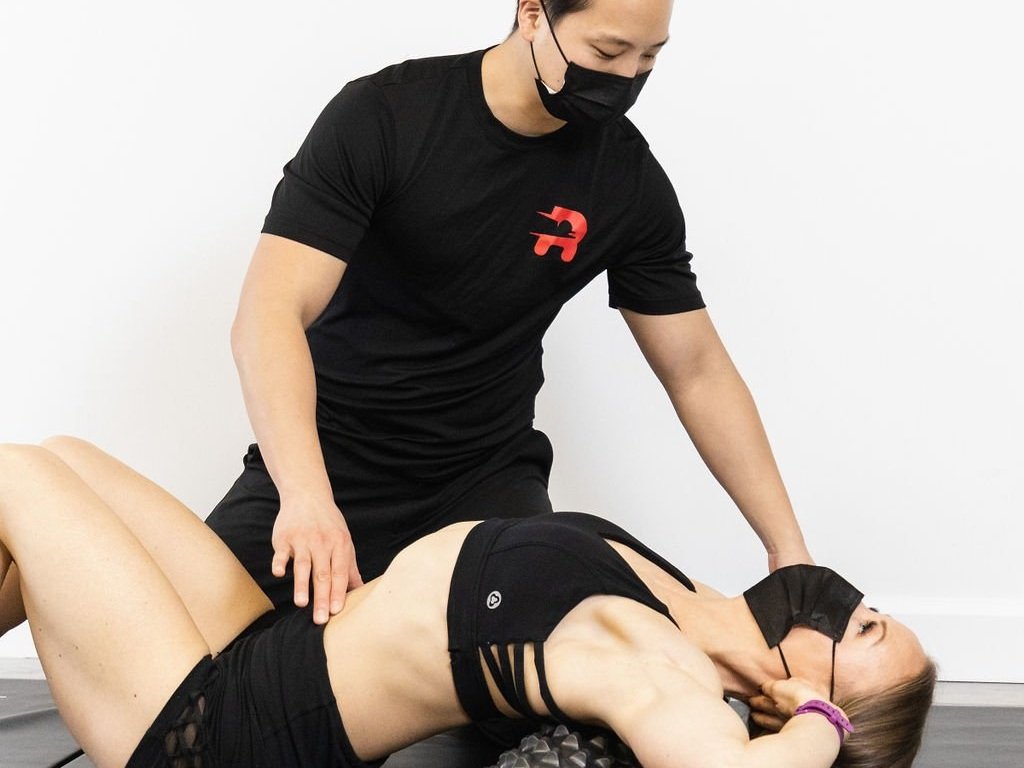Snapping Hip Syndrome
What Is Snapping Hip Syndrome?
Learn about the types of Snapping Hip Syndrome & How to Recover
What are the Signs and Symptoms of Snapping Hip Syndrome?
Snapping Hip Syndrome (SHS) is associated with an reproducible click or pop that can be heard or felt. This popping sensation occurs with motion and the location can vary depending on the type of snapping hip syndrome diagnosed.
The character of pain is typically dull, achy, and increases with activity. Symptoms reduce with rest.
Types of Snapping Hip Syndrome
There are three main categories of SHS. They are:
External SHS - This is the most common type of SHS. The snap is caused by the iliotibial band (ITB), gluteus maximus, gluteus medius, or TFL snapping over the greater trochanter. Alternatively it may be caused by the proximal hamstring tendon snapping over the ischial tuberosity. Pain tends to occur in the outer hip. A snap can be reproduced with internal or external rotation of the hip.
Internal SHS - This occurs when the iliopsoas tendon snaps over the femoral head, iliopectineal eminence, or lesser trochanter. It may also be due to the iliofemoral ligaments snapping over the anterior hip capsule. Pain can mimic and adductor strain and is located on the front of the hip. A snap can be reproduced when the hip is flexed to at least 80 degrees and moved into extension or abduction with external rotation.
Other mechanisms of snapping include the iliopsoas tendon flipping over the iliac muscle, bifid iliopsoas tendon heads flipping over one another, and iliopsoas tendon impingement over an anterior paralabral cyst.
Intra-articular SHS - This is cased by labral tears, fracture fragments (loose bodies), and/or hip instability. It is also associated with joint crepitus secondary to cartilage degeneration.
Who gets affected by Snapping Hip Syndrome
This condition is considered common with it being responsible for roughly 40% of all hip cases. This condition occurs most commonly in those aged between 15-40 years old and is more common in females. The follow risk factors are associated with increased incidence:
Co-existing injuries (low back, hip, knee, ankle, foot)
Leg length inequality
Weak abdominal muscles
Anterior pelvic tilt
Coxa vara
Hip instability
Tight Hip Flexors
Tight Hamstrings
Repetitive aggravating activities (gymnastics, hurdle running, uphill running)
Who can diagnose Snapping Hip Syndrome?
Any physiotherapist or chiropractor can diagnose you with this condition. An initial assessment will be used to rule out differential diagnosis including bursitis, hip arthritis, tendinopathy, hip dysplasia and labral tears. In Ontario, no doctor’s referral is required to see one of the aforementioned clinicians. To get assessed by a Rehab Hero therapist click the button below.
Tests for External Snapping Hip Syndrome
Positive tests for External SHS include Ober’s and an ITB stretch test. These orthopaedic tests can be completed clinically by a physiotherapist or chiropractor.
Tests for Internal Snapping Hip Syndrome
Positive tests for Internal SHS include FABERE’s and an iliopsoas stretch test. These orthopaedic tests can be completed clinically by a physiotherapist or chiropractor.
Is diagnostic imaging required?
Often diagnostic imaging is not required to diagnose Snapping Hip Syndrome. Diagnostic ultrasound may be used to show both types. Radiographs (x-rays) are not used for diagnosing this condition as it will not reveal soft tissue lesions. MRI is usually not required but may show tendon thickening, labral tears, and fluid build up in the trochanteric bursa.
Treatments for Snapping Hip Syndrome
A registered massage therapist, chiropractor or physiotherapist can treat snapping hip syndrome. Soft tissue therapy in the form of deep tissue or sports massage may be applied by the aforementioned therapists to the affected muscles. Techniques also include myofascial release, pin & stretch, and trigger point release.
Reducing aggravating activities will be required to improve prognosis. Treatments tailored to the foot, ankle, knee, and low back will be important for breaking any potential compensation cycles. Joint mobilizations to the aforementioned regions and corrective exercises may help to reduce aggravation of symptoms.
What exercises are for Snapping Hip Syndrome?
Generally stretching exercises are found to be effective for both external and internal SHS. The Figure 4 Stretch and the Lunge Stretch may be prescribed by your therapist respectively:
FIGURE 4 STRETCH
Additionally, eccentric exercise may also be prescribed by your clinician to improve your body’s capacity to handle load in elongated positions. Examples include the Wall Banger and Lunge Slider exercise for external and internal SHS respectively:
WALL BANGER
For additional exercises specific to your limitations and symptoms it is recommended to consult your health care practitioner. To book in with Rehab Hero health care provider click the button found below:
You can watch this full length video on how to deal with External snapping hip syndrome:
You can watch this full length video on how to deal with Internal snapping hip syndrome:




























